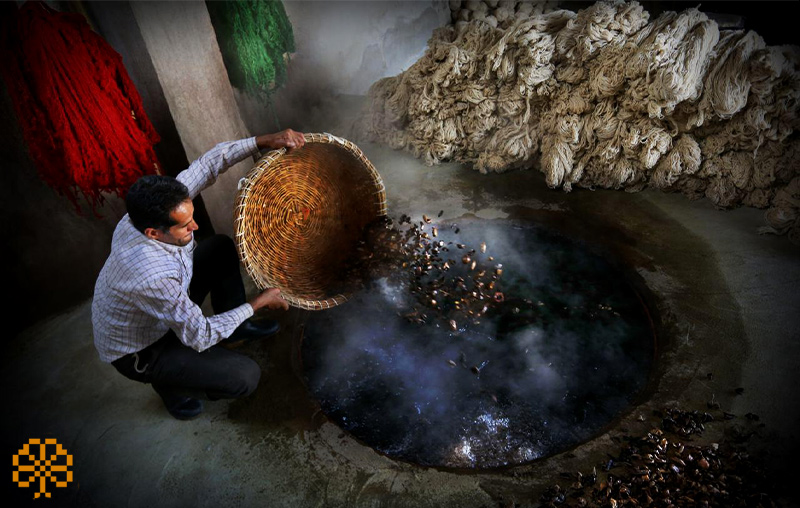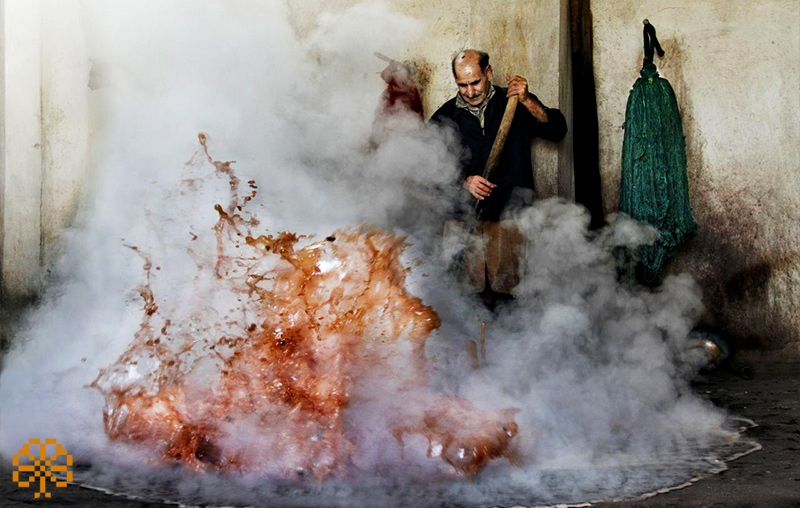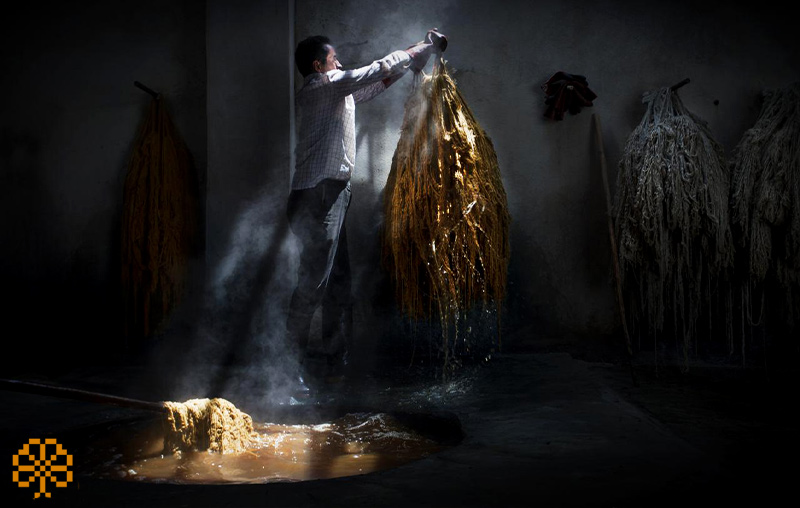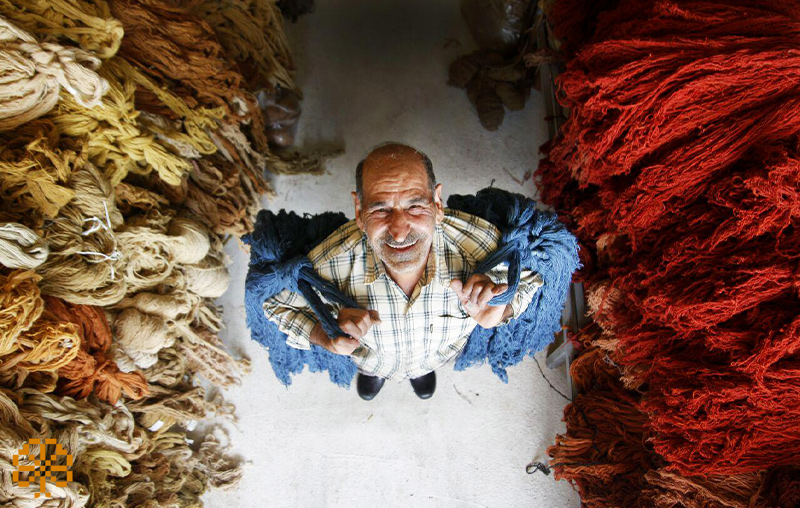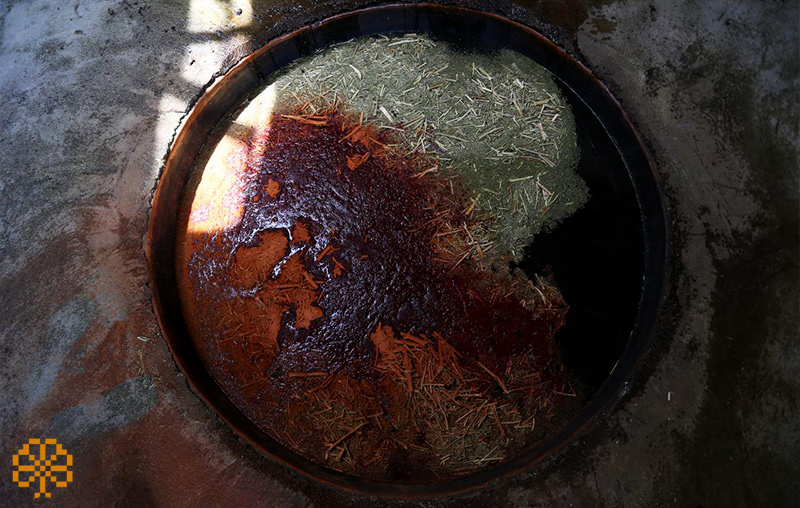Plant colors of carpets and the most important of them

Plant colors of carpets are one of the most important issues and questions faced by the carpet weaving industry, whether with the passage of time and the development of the industry should use artificial dyes, which is much more economical in terms of price and speed of work. Are we or should we adhere to the traditions and beauties that nature has given us to create works of art?
In this article, we intend to introduce the plant dyes of Farahan carpet in a general explanation and then list the most important plants that are used to produce these dyes in the carpet weaving industry.
Plant colors of carpets
Many people believe that plant-based carpet dyes can not meet the needs of the carpet weaving industry on a large scale, and sometimes wonder what colors are naturally available by plants that can be used in all carpet designs and designs. Made handmade or machine based on them?
The answer to this question and the doubts that exist is very simple. If we take a brief look at the history of carpet weaving in Iran, we will see very clear examples of the most beautiful works of art that, despite the use of natural colors, were able to create more beautiful designs and designs of carpet weaving art.
Today, the use of 3 main colors red, blue and yellow in the carpet weaving industry has been able to provide all the colors needed to create a valuable effect.
Maybe after hearing the previous sentence, this question will come to you, so what about the other colors ?? You need to know that you are able to create secondary colors, purple, orange and green, by combining both pairs of the above 3 colors in the dyeing pan.
But this is not the whole story and you are able to create many colors by combining a certain percentage of the 3 main colors mentioned, such as red-brown, yellow-brown, and so on.
It is interesting to know that these three colors alone can not produce attractive combinations in normal mode and the use of artificial colors, only when you prepare the three colors red, blue and yellow by rhubarb, indigo and onion skin. This harmony And you will see color coordination, which indicates the proper performance of using natural colors instead of artificial ones.
Types of carpet plant colors and specifications of the main plants
There are many plants that can be used to make carpet dye, but here we have tried to introduce the most important options that are suitable and used for this purpose.
1. Ronas vegetable dye
This valuable plant, which perhaps few people have not heard of, is one of the most important plant colors of carpets. This wonderful plant grows as a car and in Iran, Yazd and Kerman provinces are the main source of their growth.
As we told you in the previous section, this plant has the ability to produce different types of colors by combining with other colors. It is interesting to know that this plant alone is capable of several different colors during its seven-year life. To offer to consumers.
After 3 years of Ronas life, you are able to produce a red brick color from it, and as the plant lives, this color becomes more concentrated, and at the age of 4 to 5 years, the red color is bright. .
2. “Nile” with the most stable Plant colors of carpets
The second option among the plant colors that we want to go to is indigo, which is taken from the tree of the same name.
In fact, a substance called indigo indyl is obtained from this tree, which does not dissolve in water, and has been used for dyeing since ancient times.
As we mentioned in the previous sections, indigo is very useful and important for the production of blue dye and its derivatives.
Read more: Combining handmade art and carpet (photography + abstract painting + carpet)
3. Onion skin color
One of the most familiar options that almost all of us know and have seen, the skin and a thin layer that is placed on the onion can also be used in dyeing and can be used with colors such as copper, orange, onion skin. And even got a face.
4. Spark paint
The next option that we will examine about the vegetable colors of the carpet is spark (booth), this color that is obtained from a car plant is the same yellow color, which can be said to be the main option to be combined with blue. It is the indigo plant that produces green color.
The pigment in this plant is in its stems and leaves and can be used for up to two years. In addition to yellow, this plant can also be used to prepare gray and brown colors.
5. Walnut peel and Plant colors of carpets
It is interesting to know that nature is so generous and useful that even through wastes such as walnut skin, you can prepare plant dyes for carpets!
The important point is that the number of colors obtained from walnut skin is not just one, medium brown colors, dark browns, gray, orange, dark orange and black are among the vegetable colors of carpets that are prepared using walnut skin. Becomes.
You do not need to use teeth in preparing this paint, but by using it, you will get more stability and clarity for your paint.
6. Pomegranate peel
The fact that we see that many plant colors of carpets are cheap and available options, doubles the importance of using them, of course, we also accept that the process of preparing them for use is difficult, but a simple calculation Of positive results; High quality, long life, environmentally friendly, etc. make these hardships bearable.
We all know pomegranate peel but we do not know that it can be obtained from colors such as cream, yellow, pea, brown and even black.
Although this material does not need to be indented, but to have a good result, it is better to indent the fibers with white alum and also to use sodium carbonate.
Important Note: In the vegetable colors of the carpet, in addition to the pomegranate itself, you can also use wild pomegranate skin to prepare the color, which can be found in the wars of northern Iran and has colors similar to ordinary pomegranate skin.
7. Turmeric
Definitely among the vegetable carpet color options that we have examined so far, turmeric is the most well-known option that does not need much recognition and introduction, but the point that should be mentioned is that turmeric in addition to color Yellow is also used to provide greenish yellow, green and orange colors.
The dye obtained from turmeric needs to be combined with white alum as a toothpaste (a substance used to stabilize the color and color of fibers).
8. Baqam or Siavash blood
Baqam is one of the plants and trees that are used to produce purple, blue and gray colors. The plant colors of the carpet are obtained from the trunk of a tree called Baqam, which after boiling the trunk, these colors come out in the form of sap.
A very important point that can be mentioned about the dyes made from Baqam is the very high stability of the colors against light, which has made it widely used in silk and wool fibers.
Pure black color, which is one of the most important colors, is also obtained from the combination of purple and spark.
Other plant colors of carpets
So far we have tried to introduce the most important plant colors of the carpet to you with explanations, but since the number of these colors and plants used are very diverse and wide, the rest of the options are only with the color they produce. Introduce:
Saffron, which belongs to the genus Zanqabyan, is used for orange and reddish orange colors.
Eagle fern used to produce yellow, greenish green and dark gray colors.
Sumac is used to make a variety of colors, including; Tan and burnt brown and gray colors
The shoe that can be a cheap alternative to saffron and gives us almost the same colors.
Gandel, which grows in Bakhtiari regions, is used to get mouse or indigo colors.
Wesmeh, which is known as black henna, is used for a bluish green color and its combination with Ronas creates a crow color.
This was a list of the most important plant colors of carpets that we have introduced to you. If you also know colors that are widely used in dyeing handmade carpets, share them with us in the comments section.
